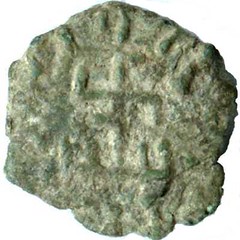
PREV ARTICLE
NEXT ARTICLE
FULL ISSUE
PREV FULL ISSUE
LANGUAGE ON COINS AND CURRENCY OF LANKAKavan Ratnatunga writes: I wrote a short article titled "Language on Coins and Currency of Lanka" based on a presentation I made in Sri Lanka.
Kavan posted the article on his web site. Thanks! Be sure to read the whole article online. It's nicely illustrated - here are some excerpts.
-Editor
Sri lak viha appears on the 8th century gold kahavanu coin. The coins of RajaRaja Chola replaced lak viha with RajaRaja. After Lanka was liberated in 1070 we find coins in the names of VijayaBahu, ParakramaBahu, Nisankamalla, Sahasamalla, Lilavati, Dharmasokadeva, Buvanekabahu. Most of the coins of latter monarchs are minted in copper. Known then as Massa of which large numbers are found in hoards. All these medieval coins had text in DevaNagari. The 15uh century Setu massa are the first Lankan coins with Thamil text. They were issued by the Arya Chakravartis in Jaffna between 1462 and 1597. These copper coins has the Standing Monarch characteristic of most medieval Lankan coins. In this coin the word Setu appears below the Nandi bull couchant facing left.
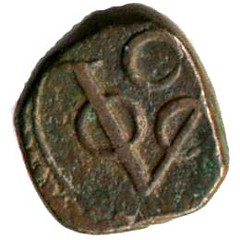
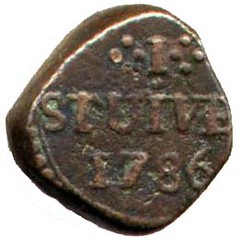
Dutch coins had the VOC (Verenigde Oostindische Compagnie) monogram of the Dutch East India Company. These crude thick Copper Dump coins were minted locally between 1783 and 1795 in Colombo, Trincomalee, Galle and Jaffna. Colombo (C) had STUIVER and Trincomalee (T) had ST. The Galle (G) had value in Sinhala text and the Jaffna (I) had Thamil text.

Lanka's first currency note was issued in 1785, which was in Rix Dallars and called Kredit Brieven and payed 3% Interest. It had text in Dutch, Sinhala and Thamil. This Dutch liability was taken over by British in 1796.
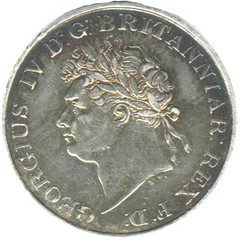
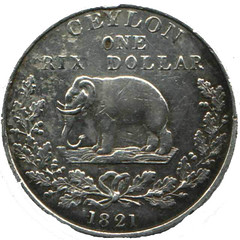
Early British coins had a standing Elephant facing left with CEYLON GOVERNMENT. The locally minted copper dump coins from 1801 to 1816 had value as a fraction of a Rix Dollar (48 Stivers), and the Silver Dump coins minted from 1803 to 1809 had value in Stivers. The very iconic Silver Rix Dollar coin of 1821 has George IV. All these coins had text only in English.
To read the complete article, see:
Language on Coins and Currency of Lanka
(coins.lakdiva.org/notes/language.html)
The Numismatic Bibliomania Society is a non-profit organization promoting numismatic literature. See our web site at coinbooks.org. To submit items for publication in The E-Sylum, write to the Editor at this address: whomren@gmail.com To subscribe go to: https://my.binhost.com/lists/listinfo/esylum All Rights Reserved. NBS Home Page Contact the NBS webmaster 
|
